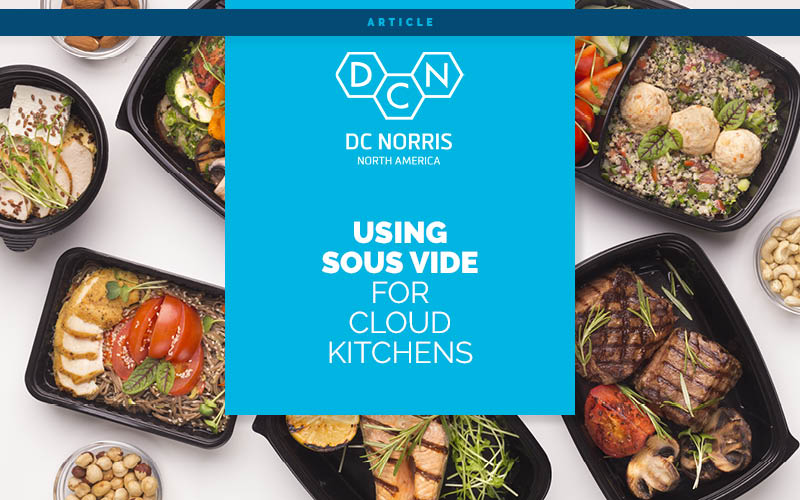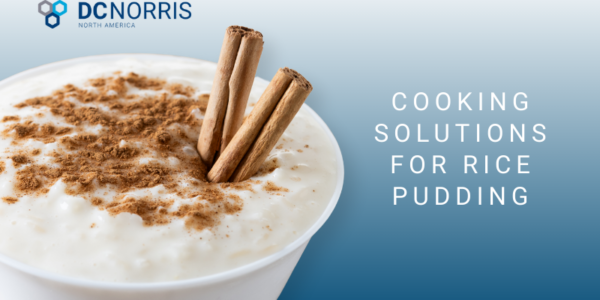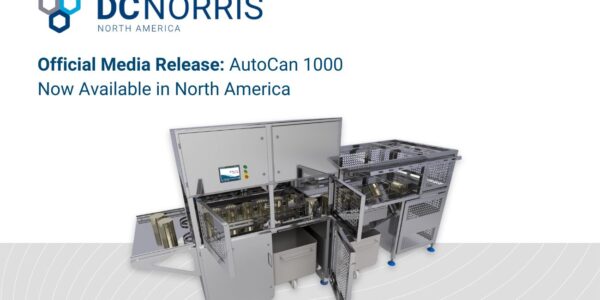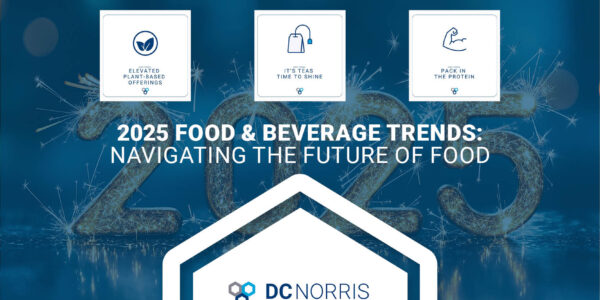Where Does Sous Vide Fit in the Cloud Kitchen Model?
Whether you call it a cloud kitchen, a ghost kitchen, or a virtual kitchen–one thing is for sure–they’re changing the food industry. As startup costs for food businesses rise, labor shortages loom, and regulations grow more restrictive, cloud kitchens seem to be providing the overhead relief that food businesses need right now. Naturally, with the launch of our commercial-scale sous vide cook tank (Model CT-1) still fresh, we’re wondering if using sous vide for cloud kitchens is a good fit.
What is a Cloud Kitchen?
Cloud kitchens are dedicated food preparation spaces that allow restaurants and other food businesses to prepare menu items for delivery and takeout. Unlike restaurants, there is no dining space in a cloud kitchen. It is exclusively for food preparation and is fitted with all the prep, cooking, storage, and cleanup equipment you would find in a commercial food preparation space. Unlike traditional restaurants, however, cloud kitchens are often leased and shared by many organizations providing substantial cost and labor savings.
The COVID-19 pandemic created a surging demand for delivery and takeout options and many restaurant owners, struggling with staffing, are finding it hard to reopen dining rooms and meet the huge demand from takeout and delivery orders from the same kitchen. Cloud kitchens have helped tackle this challenge – giving those restaurant owners a separate cook-and-prep-only space to fulfill those takeaway orders without overburdening the kitchen staff at their brick and mortar.
Is Using Sous Vide for Cloud Kitchens a Profitable Choice?
Short answer – yes.
Sous vide, also known as low-temperature long-time cooking, is a French cooking method where food is vacuum-sealed in plastic pouches and cooked in a water bath that is precisely temperature regulated. Because foods are cooked at such low temperatures, the method achieves even doneness (no burning on the outside), moisture retention, and aroma preservation. A key drawback of the method? Browning, which is considered very desirable for many kinds of meats, can’t be achieved at those low temperatures. So to serve foods, like steaks, that have been cooked sous vide, a secondary browning method is usually used. Foods like steak and fish can be flash seared before delivery to create the additional flavors and “crunch” often desired.
This drawback, though, is part of what makes sous vide cooking (in particular automated sous vide cooking) so ideal for the cloud kitchen model. With an automated sous vide machine like the CT-1, foods can be left to cook unattended. In fact, they can be left to cook overnight and still deliver perfect doneness. Cloud kitchens exist, in part, to meet customer demand for delivery and take away options without over-extending staff and resources. Imagine if, at the end of delivery hours, your lean cloud kitchen team could drop up to 120lbs of product into a sous vide cooker and return the next morning to perfectly cooked, perfectly portioned, ready to store safely until ordered, product. This changes the game.
Now, you’re cooking to inventory, rather than to order and the number of completed orders a lean cloud kitchen team can fulfill for your business expands exponentially. A quick secondary browning of a chicken breast takes a fraction of the time as cooking the same chicken breast from raw. And there’s absolutely no guarantee, if cooking to order from raw, that it will be perfectly done or properly seasoned. Sous vide creates unbeatable finished product consistency and recipe adherence – with the bonus of operational efficiency and speed. A perfect match for the highly profitable cloud kitchen model.
How Do You Adapt Recipes to the Sous Vide Method of Cooking?
While there are several guidelines based on the thickness of cuts, and desired finishing/browning techniques – the general rule of thumb for adapting recipes to the sous vide method of cooking is trial. Working with an experienced partner like DC Norris can give you access to global expertise, test kitchens for recipe development, and trials on equipment. For ghost kitchens that may operate as a shared space, cooks will likely need to spend some time running recipe and product development tests to achieve the desired finished product. Unlike more traditional cooking methods, sous vide allows meats to be marinated, seasoned, and tenderized during the cooking process rather than before cooking which saves a great deal of time.
How Does Model CT-1 Work in a Cloud Kitchen?
Traditional cooking equipment like grills, stoves, and ovens can’t be left unattended. Automated sous vide machinery, like the CT-1 can. Meaning that foods can be batch cooked and held in cold storage until they’re needed to fulfill orders. Depending on the volume required, the sous vide equipment may only need to be used by one business a few times a month – leaving room for multiple businesses to use the sous vide cooking equipment without the worry of cross-contamination. Because sous vide requires foods to be sealed before cooking, there is no chance of transferring flavors from one recipe to the next. Additionally, sous vide is remarkably safe for those preparing free-from dishes (foods from one of several allergens).
Model CT-1 is NSF certified, meaning that it meets all food service safety and sanitation requirements – making it ideal for cloud kitchens that must pass inspection and meet code.
Request a CT-1 Quote
For a limited time, DC Norris North America is offering a 10% cash-back rebate on the CT-1. To learn more about this groundbreaking commercial sous vide cooking system and request a quote, complete the form below.



